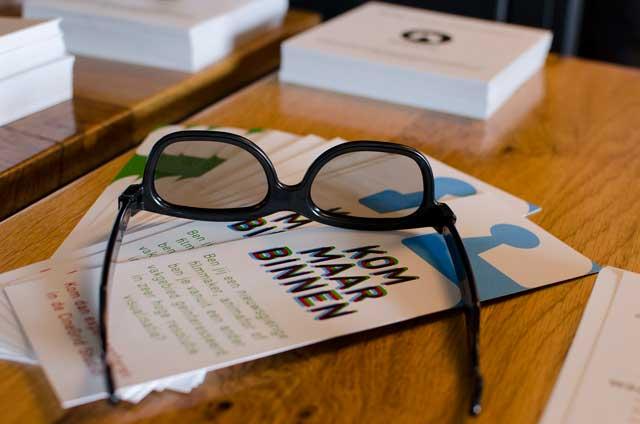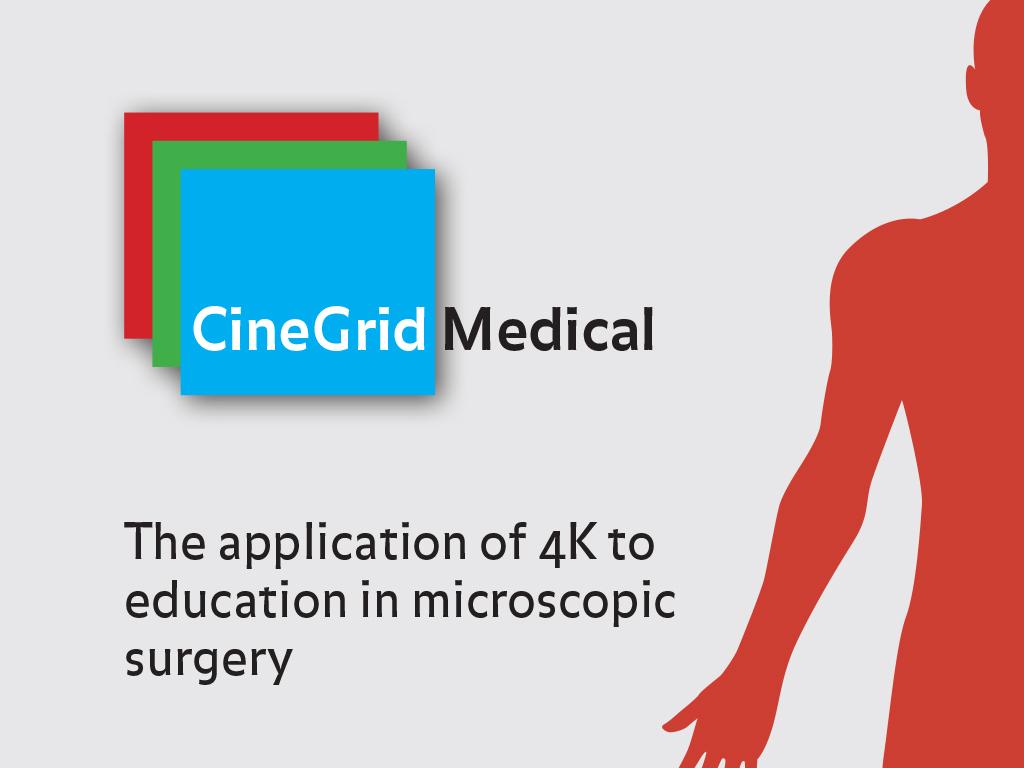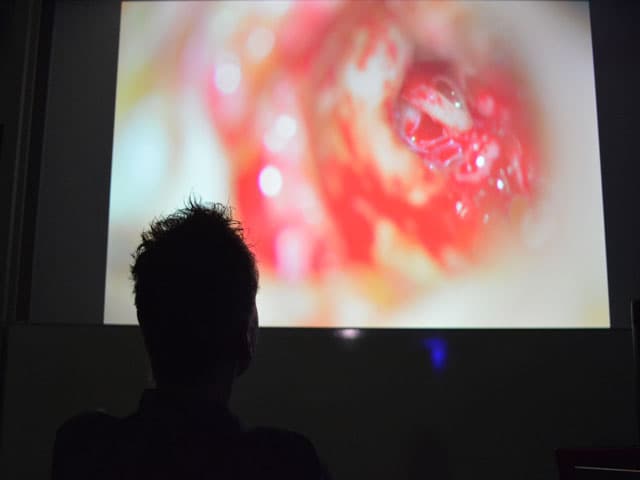The future was the theme of the CineGrid Event that took place yesterday and was all about super high resolution images, sound, international cooperation and sharing knowledge.
When I enter Pakhuis de Zwijger in the morning, I walk into a sunny setting which is created for the workshop held by Sandberg Institute and filmmaker Selby Gildemaker. A yellow cloth, a beach and a palm tree. Actor Henk is lying on a sunbed in a blue swimsuit. He has a stethoscope on his chest which is attached to an amplifier. On this amplifier lies a miniature version of Henk, also on a sunbed. "’Big’ Henks rumbling belly causes earthquakes for little Henk, which I want to capture," says Selby. The guests join in on the production, for example by figuring out how you can handle theater lights instead of the familiar light in a film studio. Hopefully I can admire the results soon, because I am very curious how ‘little’ Henk survives the earthquakes.
The afternoon is opened by moderator Frank Kresin (Research Director at Waag). "Turn around and look up. There you see the engineers and crew of Waag. They have worked till four at night to make this possible”, he starts. Besides these technicians I see two huge projectors, which were brought here from Poland especially for this day. Frank gives the floor to Laurin Herr, founder of CineGrid: "CineGrid Netherlands has played a valuable role in creating a network and bringing people together. We have pioneered and the rest of the industry is starting to follow. So it is time for us to start searching for new challenges and areas to explore."
Does size matter?
One of these 'challenges' is scaling up the technology to the general public. David Linssen (Consolidated Media Industries) talks about the various obstacles that must be overcome for this: such as the lack of opportunities to view 4K material in the Netherlands. He asks: "Is there a future for 4K? And "does size actually matter?" An image that sticks with me is the triangle he outlines between technology, creativity and the audience. If you only involve two pillars, for example technology and audience, then you get a pure technical experience. This is a danger that David sees for 3D productions. Only creativity and technology on the other hand, delivers products that will interest for a very small audience. "If we can place 4K in the middle of this triangle, I see a bright future. Because ultimately everything is not about 'size', but about what you do with it."
4K and science
Wilko Grolman's is a doctor at the Scientific Medical Centre in Utrecht and thus the person to show us the possibilities of 4K in science. For example in 'global learning', or sharing knowledge with scientists worldwide. Now they use cameras that run at 1K, whilst being able to see details in high resolution is crucial. A 4K upgrade is needed, which is also demonstrated by Katelijne Schrama in her documentary Sanguis Verus, about the life of red blood cells. She interviewed scientists from the Sanquin bloodbank and watched the cells with them through a 4K lens. Certain elements suddenly became visible and as a result, the laborists decided to adjust some of their procedures.
Meet the makers
Ton Roosendaal of the Blender Institute is clear about 4K: "It is all about enhancing artistic freedom. We want to own 'Hollywood Technologies' so that we can make our own productions." And this is working out quite well for the institute, as we can see during the pre-premiere of Mango, the latest project of the institute. Japanese filmmaker Daisuke Shirai (Growing Documentary) shows how using a realtime collaboration framework enables him to make movies with filmmakers spread over the world. In his demonstration he makes a short film about the journey of his homeland to the CineGrid Event in Amsterdam, together with colleagues in Japan.
Technical progress
After an update by Cees de Laat on the developments of the global CineGrid network and a look at the latest technical developments by Maciej Glowiak (Poznan), it's time for 4K on the big screen. A Polish 3D production shows us, next to a fight to the death, the possibilities of 4K for animation. Then there are the creative OneMinutes, the poetic production Sisters and some very impressive Japanese productions. After this day, I hope that 4K will find the center of the triangle David Linssen was talking about. Because I want to see more of this technique!
See the pictures of the event here.


